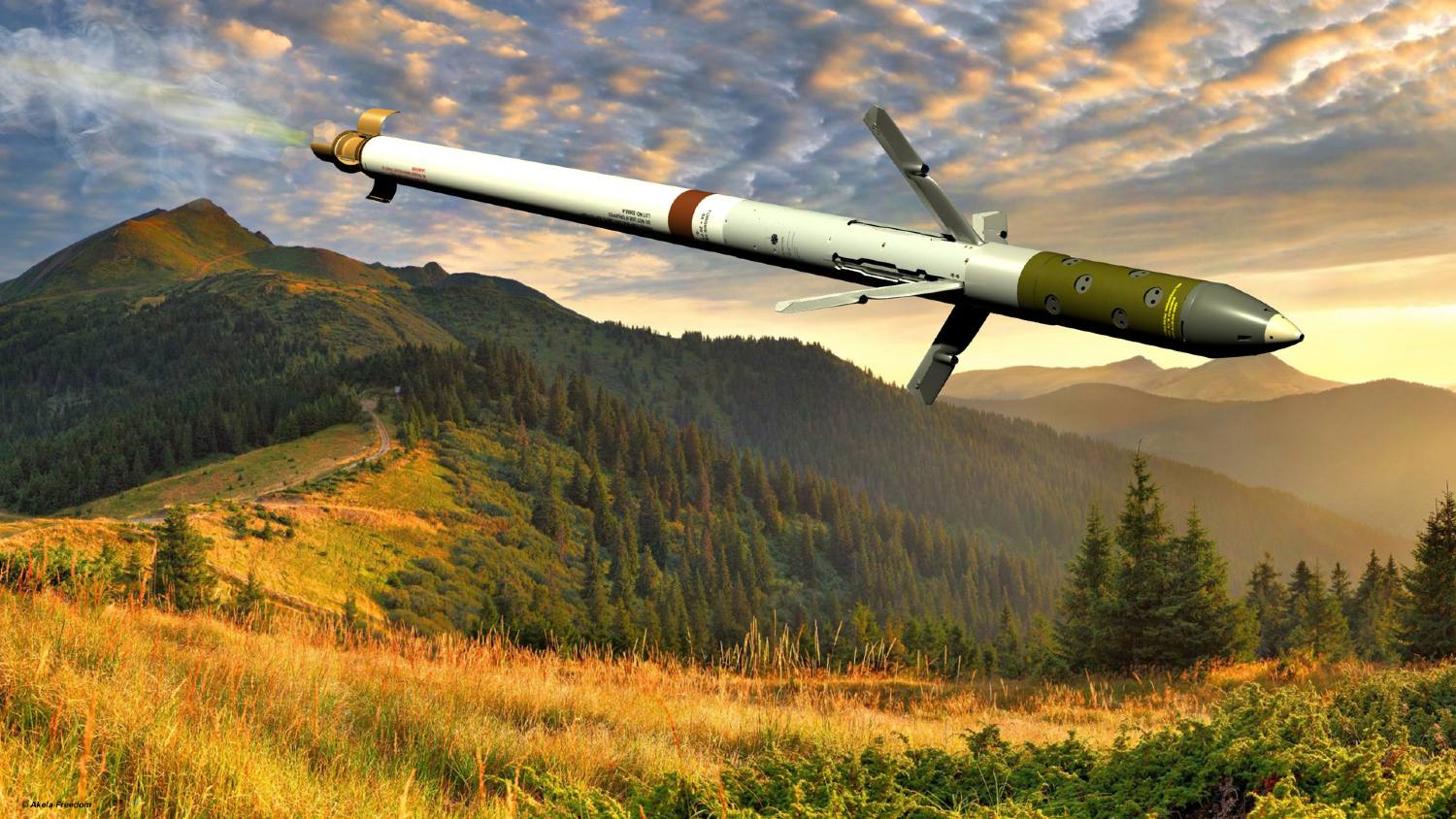The Ukrainian army finally began using the Advanced Precision Kill Weapon System II (APKWS II) on Russian targets almost a year after the Pentagon announced it would send the laser-guided rocket platform to Kyiv.
A video tweeted by the popular Ukrainian handle Ukraine Weapons Tracker showed the Armed Forces of Ukraine (AFU) firing the APKWS. According to the tweet, the weapon is being employed by the 37th Marine Brigade.
It is mounted on an M1152A1 High Mobility Multipurpose Wheeled Vehicle (HMMWV or Humvee).
The weapon is being used in the Kherson Oblast, where Ukraine has lost a substantial amount of Unmanned Aerial Vehicles (UAV) and surface-to-air (SAM) platforms like the Gepard and the S-300.
A Russian Ministry of Defense (MoD) update on April 28 also claimed Ukrainian losses of 65 soldiers, three military vehicles and an Akatsiya self-propelled gun (SPG), and a D-30 artillery.
Video Shows First Use Of APKWS
The video shows one rocket leaving the Humvee-mounted launcher vertically. Another video, from a hovering drone at a distance, shows it landing on the roof of a house. Presumably, the location has to have been targeted because of the presence of Russian soldiers inside.
#Ukraine: The new Ukrainian 37th Marine Brigade already using the long-awaited ?? APKWS in #Kherson Oblast. The APWKS is essentially Hydra 70 unguided rockets fitted with a laser guidance kit to create a precision weapon.
In this case the launcher is mounted on a M1152A1 HMMWV. pic.twitter.com/j0PK1QccN1
— ?? Ukraine Weapons Tracker (@UAWeapons) April 27, 2023
The airborne drone captures another rocket hitting what appears to be the house’s front entrance. A third rocket leaves the launcher and hits a tall mast-like tower. It is unclear whether the tower was Russian communications equipment or any other device used by its military there.
What Is The APKWS?
In 2005, the US Army started a new development program called APKWS II, and BAE Systems was selected as the prime contractor. Other contractors included General Dynamics and Northrop Grumman.
The BAE systems fitted the APKWS with its distributed aperture semi-active laser seeker (DASALS) guidance and control system to convert the unguided Hydra 70 rocket into precision munitions. This enabled them to engage soft and lightly armored targets in restricted areas with minimal collateral damage.
The semi-active laser-guided rocket system consists of three main components, which include M151/MK152 and M282 warheads, M423/MK435 fuse, and a standard MK66 rocket motor.
The rocket system has wing assemblies and folding fins, each with a low-cost laser seeker located on the leading edge. They work as a single seeker, allowing existing warheads from the Hydra 70 system to be used without needing a laser seeker in the nose.
The weapon system is also fitted with a MEMS inertial measurement unit and advanced digital signal processing technique for improved communication.
The system works with standard laser designators, which involve the operator highlighting the target for the rocket to home in on it. It is known to have a range of over 4.83 kilometers from a helicopter or 11.27 kilometers from a fixed-wing aircraft. This was increased by 30% after a software upgrade by BAE Systems in 2021.

Possible Impact On Russian Weapons
The rocket system can be deployed against ground, air, and sea-based threats and used for Close Air Support operations.
Laser guidance is the fundamental aiming system for the guided rocket, where the fin-mounted system detects even faint laser sparkles from a designator. This means the targets shown in the video must be ‘lased’ by either the laser designators on the Humvee, a forward observer, or a drone. It is not clear which of these designators was used by the Ukrainians.
But the weapon has a largely tactical orientation to hit light armored vehicles or bunkers. Promotional graphics from the weapon’s developer, BAE Systems, also show the rocket diving down on the top of a tank turret, meaning it has anti-tank capability.
Main Battle Tanks (MBT) are vulnerable on the top, where the armor is the weakest. It is conceivable that a 70mm rocket with a 4.5-kilogram (10 pounds) warhead hurtling down on a tank turret from the top might not rip it open like a Javelin anti-tank guided missile (ATGM), but at least disable it.
An overhead drone can shine the laser on the tank for the rocket to hit the turret. The rockets can also come in handy against drones, like the Lancet-3 loitering munition or the Orlan-10 surveillance UAV. However, the small aircraft must be continuously illuminated with a laser for the rocket to hit them.
The Russians will have noticed the weapon and will likely keep actively tracking it. For any noticeable impact on the battlefield, Ukraine will need larger numbers of APKWS II, and it is unclear how many units the US has transferred till now.
- The author can be reached at satamp@gmail.com
- Follow EurAsian Times on Google News




